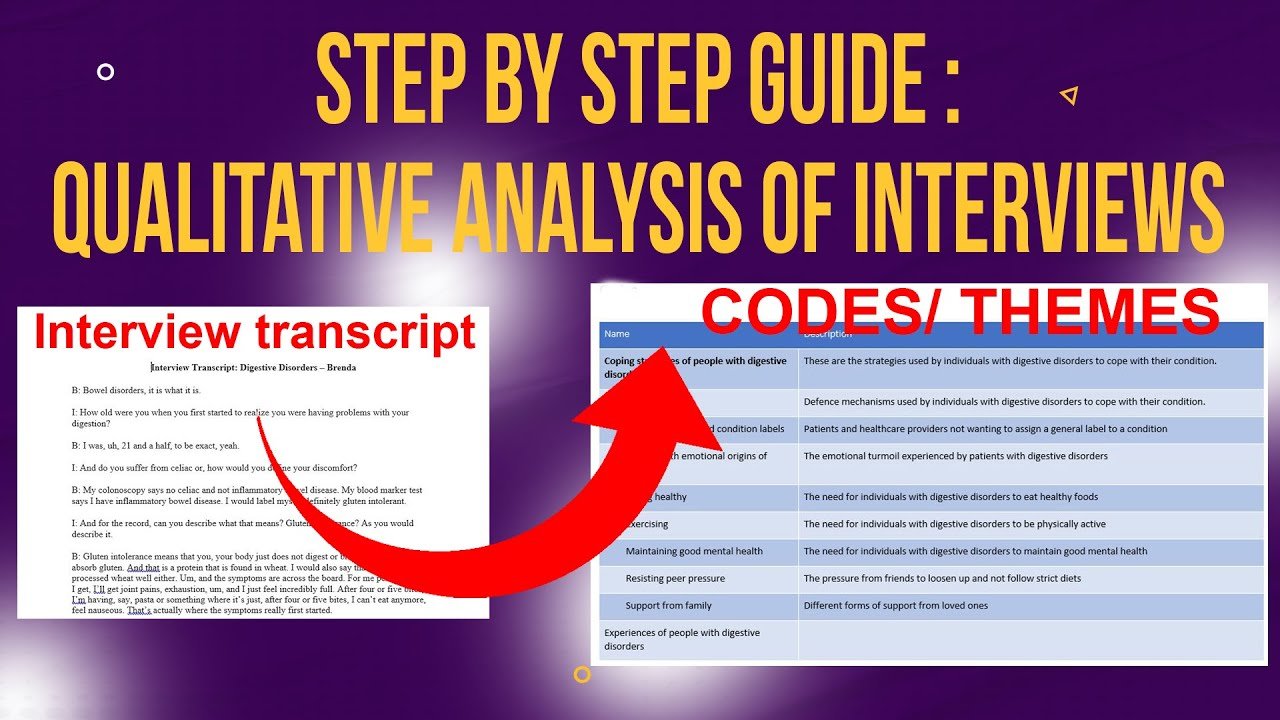Template Analysis in Qualitative Research Using Nvivo
Let’s quickly look at how to conduct template analysis.
Template analysis represents an approach to analysing data from interview transcripts.
Using the template analysis method, a researcher first comes up with the template that will be applied in analysing all their data. The template will be made up of predetermined themes that a researcher will want to find in their data.
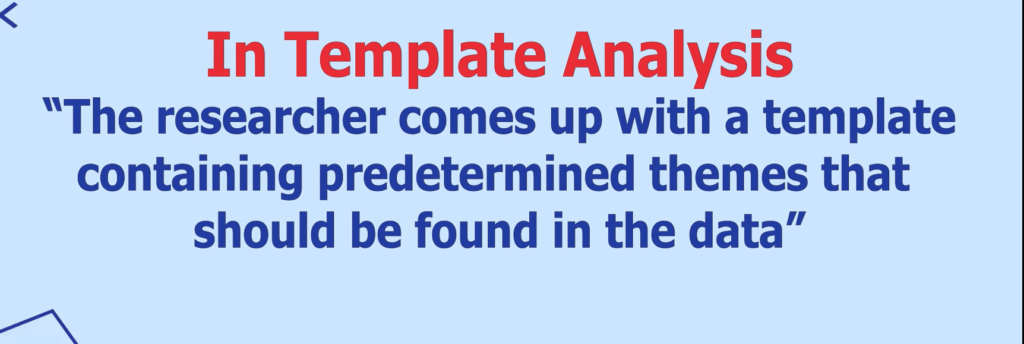
Template Analysis
Mainly, the themes are predetermined based on a researcher’s objectives or research questions.
Because of the establishment of a predetermined template of themes before conducting analysis, the template analysis approach is therefore also known as the codebook approach.
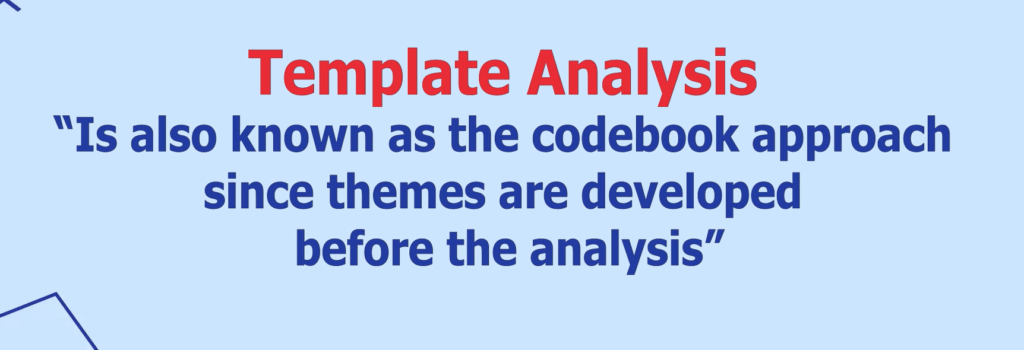
Template Analysis is the Same as Codebook Approach
Just like the codebook approach, the template analysis approach is therefore a deductive approach to conducting thematic analysis.
Deductive means that researchers will rely on predetermined themes to analyse their data and look to fit the qualitative data from the interviewees into such predetermined themes.

Deductive Thematic Analysis
During the template analysis approach, a researcher analyses a few of their transcripts, such as 3 out of 15 transcripts, and sits to revise and modify their template accordingly, before analysing the rest of the transcripts.
The steps involved in template analysis, therefore, include:
- Transcribing and familiarizing oneself with the interviews,
- Defining a priori themes, which is coming up with predetermined themes.
- Conducting initial coding on a subset of transcripts and matching some initial codes to the predetermined themes.
- Reviewing the initial coding and revising the predetermined themes to effectively match the initial codes generated from the transcripts.
- Coming up with an effectively developed template of predetermined themes with clear descriptions.
- Applying the final template to all the transcripts, which is the full data set during the coding process.
- Utilizing the final template to interpret and write the findings report.
It’s important to maintain reflexivity and to conduct reflexivity tests during template analysis, to ensure that the data is not significantly distorted by the assumptions and preconceptions of the researcher.
Now, let’s conduct template analysis on some transcripts using the steps that we just highlighted above.
Familiarizing with the Transcripts

Familiarizing with the Transcripts
The first step in conducting template analysis is transcribing and familiarizing oneself with the interview transcripts, and also the interviewees and the whole interview process.
This is my transcript.
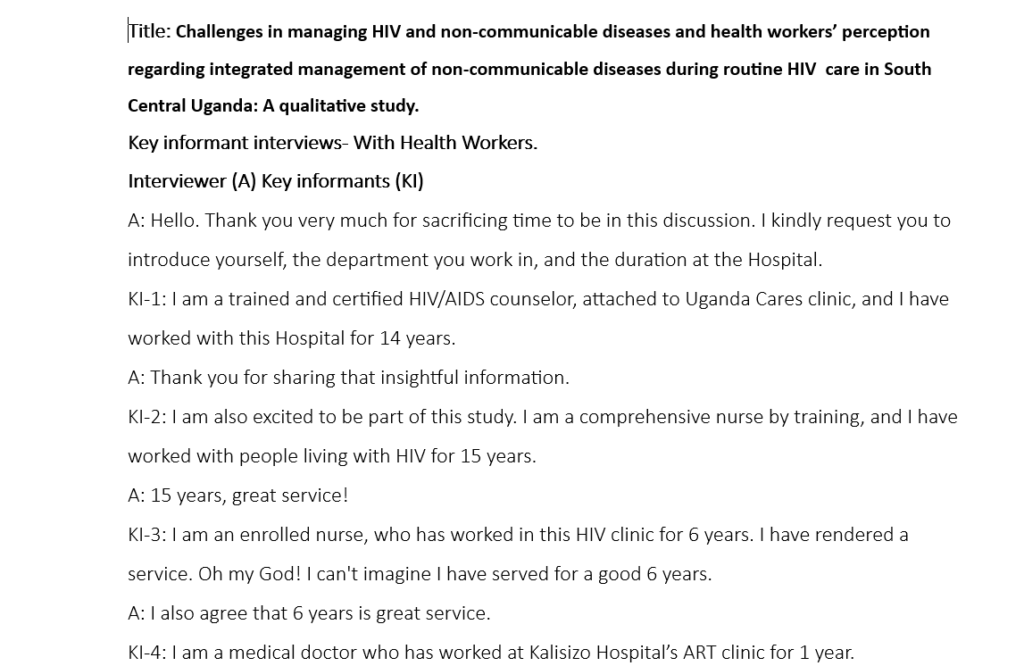
The Transcript
Normally, when you’re conducting research, you go collect data, then you transcribe the data.
You can use software or you can do it manually. I prefer to use software. For instance, Otter. ai or any other software that you might prefer.
After you transcribe, you will go through the transcripts one by one, reading through them making corrections on any grammatical mistakes or issues that the AI missed.
While doing this, you will read through the transcripts, proofread and edit them this helps in familiarizing with the transcripts adequately.
Now, it’s important to first familiarize with your transcripts so that you can understand the main issues of discussion and compare the information from the transcripts with the research objectives or research questions you want to answer, this will help you to determine the main issues in your research study.
Coming up with a Priori Themes

Coming up with a Priori Theme
Then you can move to the second step of template analysis which is coming up with a priori themes, a priori means before.
In template analysis, we have to determine the themes we want to explore before the analysis, what does that mean?
For instance, in this case, we have a study titled Challenges in Managing HIV and Non-communicable Diseases and Health Workers Perception Regarding Integrated Management of Non-communicable Diseases During Routine HIV Care in South Central Uganda, and this is a qualitative study.
Just by reading this title, going through this transcript to familiarize myself, reading through it like a story, I was able to come up with these three a priori themes.
These three issues are the main themes I want to find in the data.
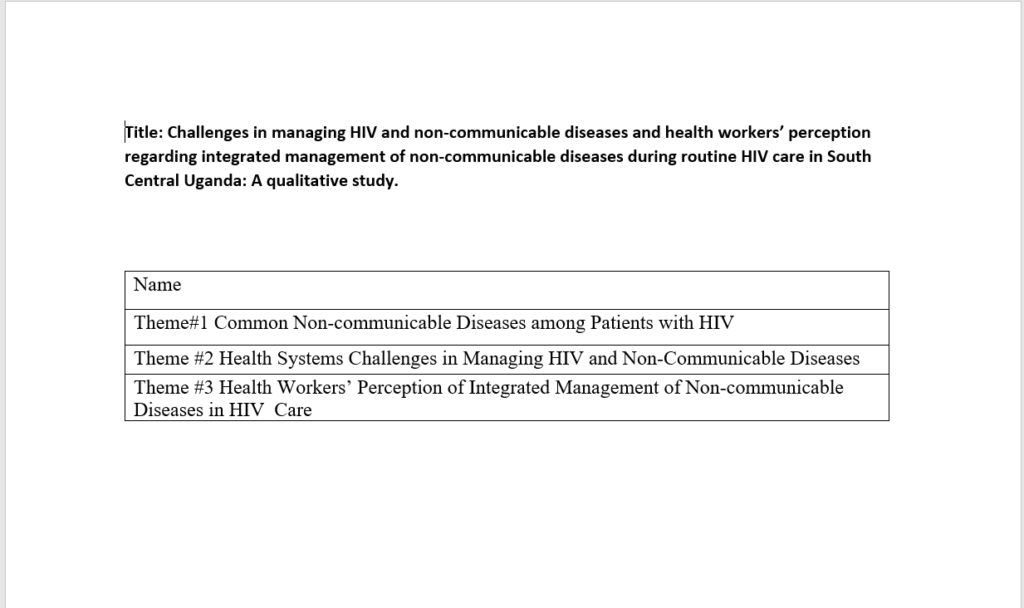
The Three a Priori Themes
Remember, in template analysis, we come up with the deems first.
We develop the themes a priori before we go and look for data to fit into the themes.
So, the second step of template analysis is going through your research background, your research objectives and research questions and developing themes a priori or before you conduct the analysis.
And that’s what I’ve done.
Generating Codes and Linking them to a Priori Themes

Generating Codes and Linking them to a Priori Themes
Now, the next step will be trying to find initial codes to match with the developed themes or a priori themes, that is the step where we go to Nvivo.
I’m going to open Nvivo and create a new project.
Now, NVivo opens like this. As a beginner, you should only focus on the files and codes section.
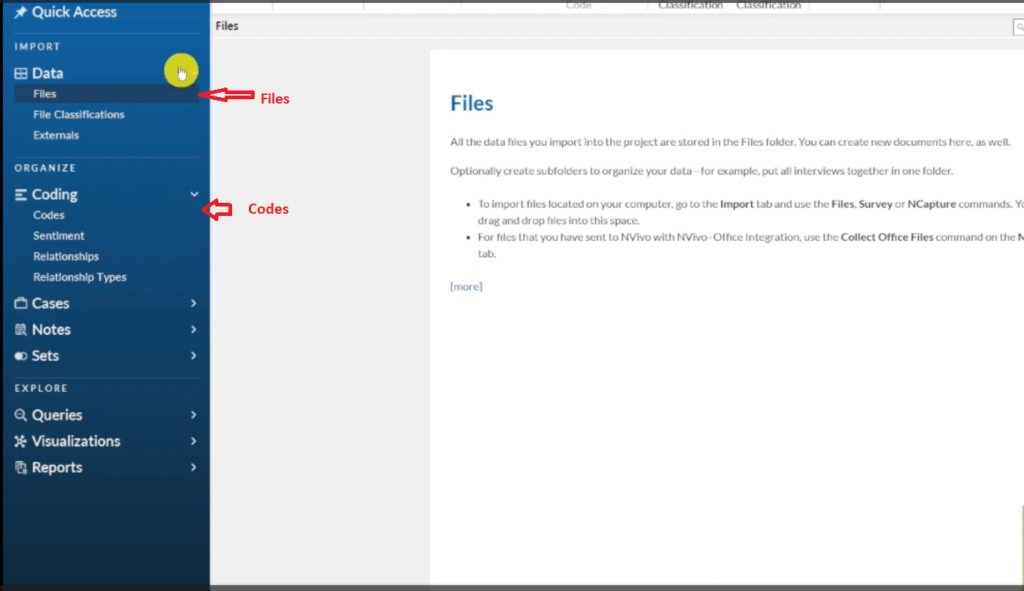
The Files and the Codes Section
In the files section is where we are going to import our transcript.
And in the codes section is where we are going to generate our initial codes.
And even, this is where we are going to fit our themes that we developed a priori. And then, fit the codes into those themes.
I am going to drag and drop the transcript in the files section.
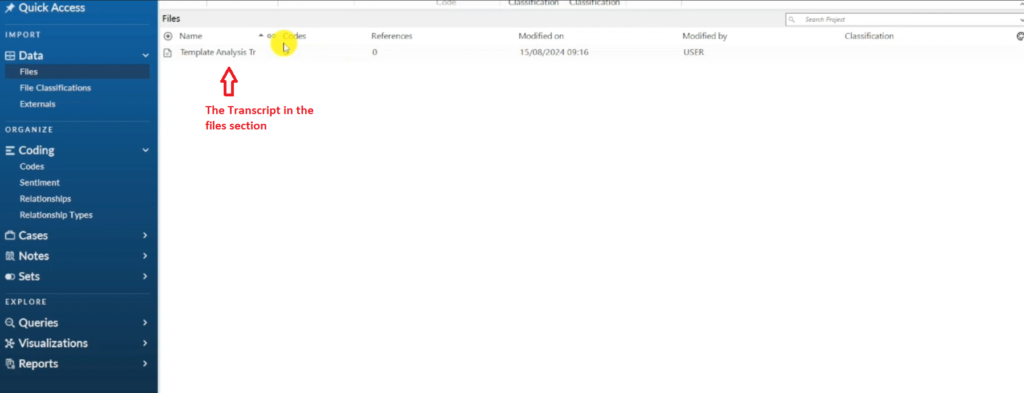
The Transcript in the Files Section
This is the transcript I’m going to analyse.
Because we are conducting template analysis and we have developed the themes a priori, for example, you have theme one, common and communicable diseases among patients with HIV.
We are going to import these themes, and in the code section
These are the three predetermined themes.
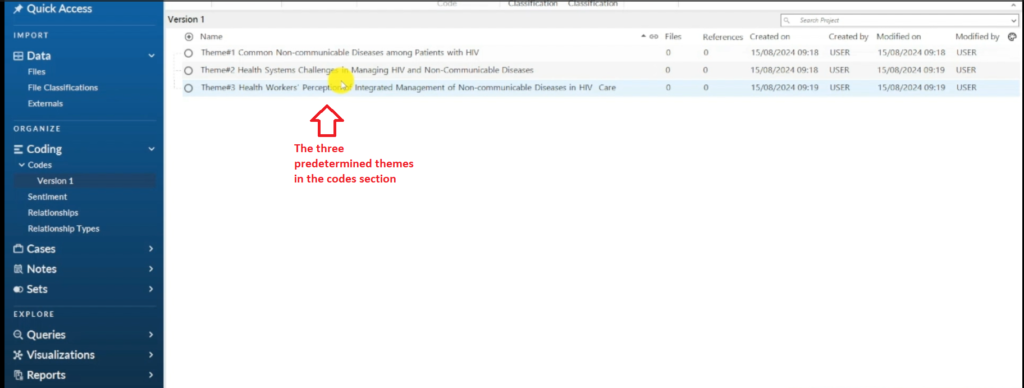
The Three a Priori Themes in the Codes Section
And this is where I’m going to feed the data.
We can right click on every theme and go to code properties and we can even add a clear description for every deem and we should practice that. For example, common non- communicable diseases among patients with HIV.
This represents the most prevalent non-communicable disease among patients with HIV.
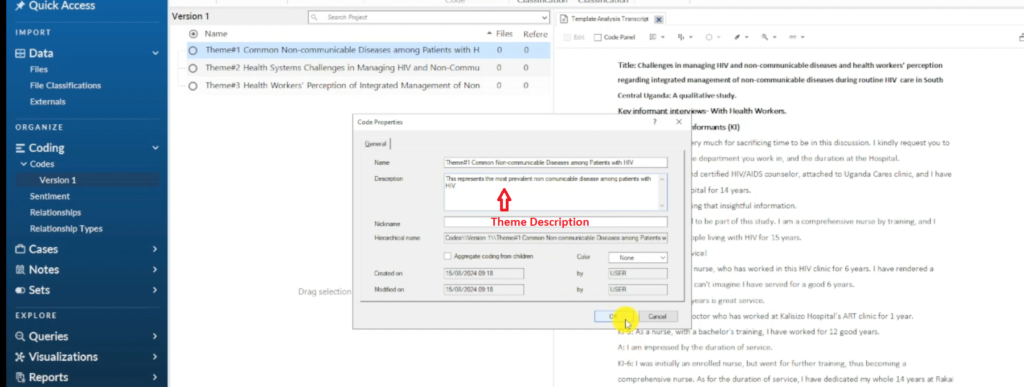
Theme Description
We will add a description for all the themes.
Now remember this is template analysis. We are going to get codes and feed them into already predetermined themes.
Remember, this interviewee was interviewing healthcare practitioners who attend to patients with HIV, and this is a focus group where they were interviewing different people.
So “kindly share the common non communicable diseases that you manage at the hospital.”
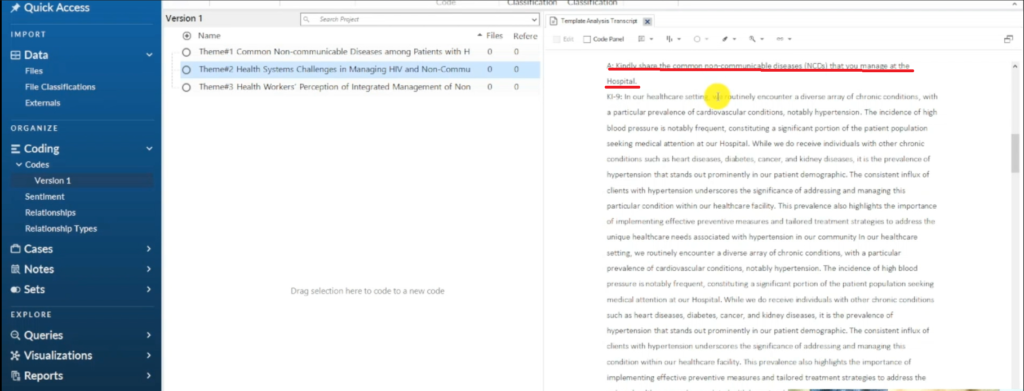
A Section of a Transcript in Nvivo 14
This is a participant who says: “In our healthcare setting, we routinely encounter a diverse array of chronic conditions with a particular prevalence of cardiovascular conditions, notably hypertension. “
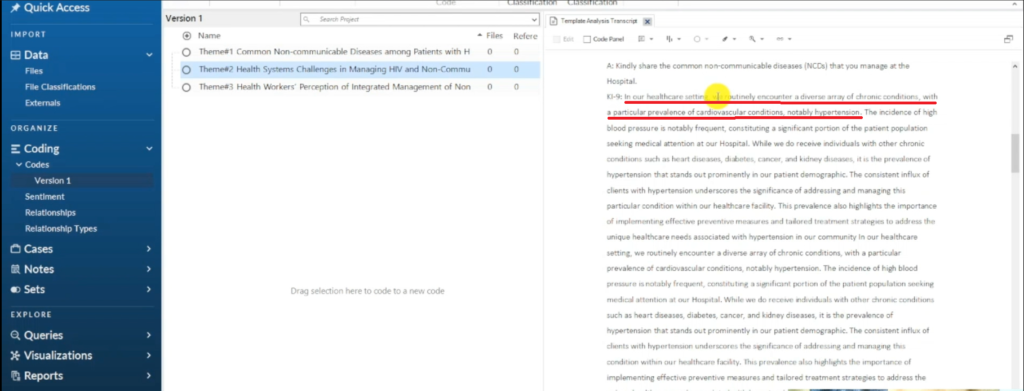
A Section of a Transcript in Nvivo 14
Let me just repeat. Now we are trying to conduct template analysis. Template analysis is about developing a priori themes and then fitting your data into the already predetermined themes.
Now, in this case, I’m going to code this section, and a code, is a label or an interpretive statement of information that’s important to my research question.
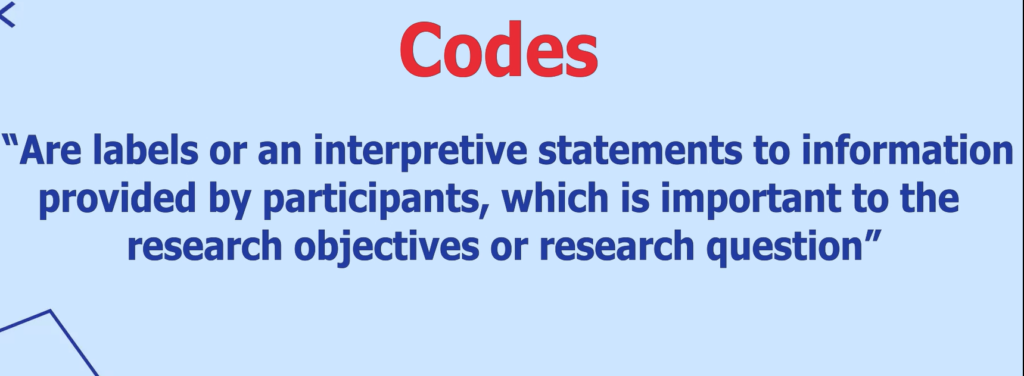
Codes Definition
So, by coding, we are just labelling or interpreting important sections of our transcripts. Let’s read this section and develop some code.
“Kindly share the common and communicable diseases that you manage at the hospital.”
Now this person says, “in our healthcare setting, we routinely encounter a diverse array of chronic conditions with a particular prevalence of cardiovascular conditions, notably hypertension. The incidence of high blood pressure is notably frequent, constituting a significant portion of patient population seeking medical attention at our hospital.”
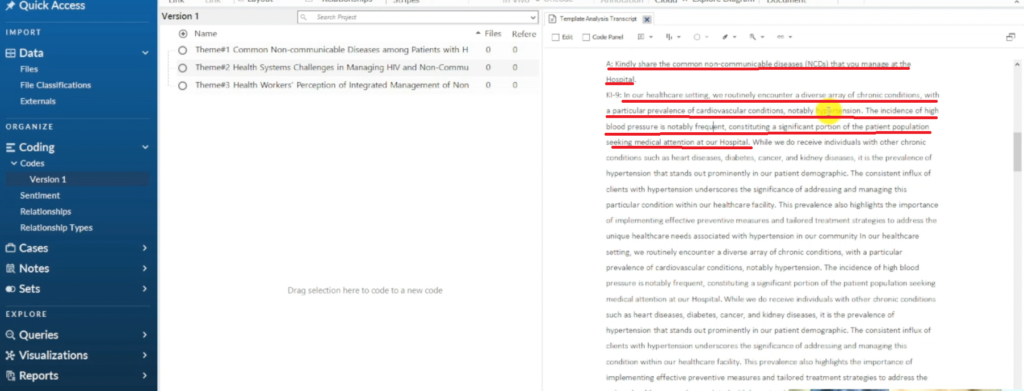
A Section of a Transcript in Nvivo 14
We can start here and code all this area and call this high blood pressure or hypertension. I highlight that section, drag and drop in the blank area.
I call this high blood pressure.
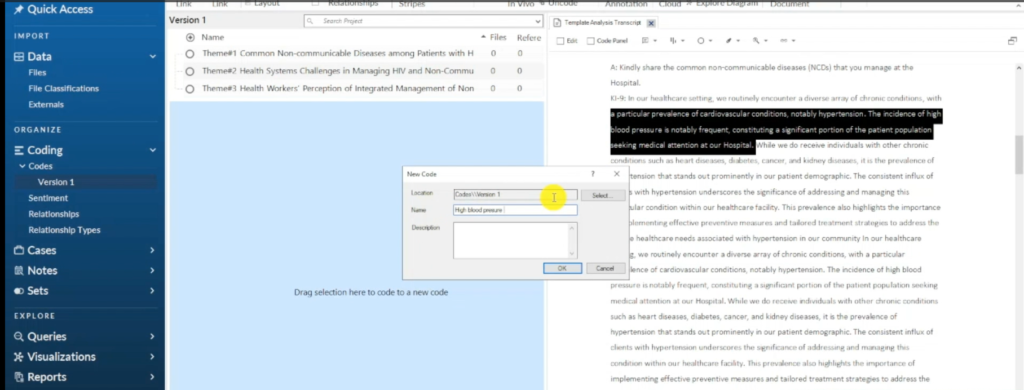
The Code High Blood Pressure is Created
That’s high blood pressure.
Since this is template analysis we drag and drop the codes we develop into the theme common non-communicable diseases among patients with HIV.
Then “while we do receive individuals with other chronic conditions such as heart diseases, diabetes, cancer, and kidney diseases.”
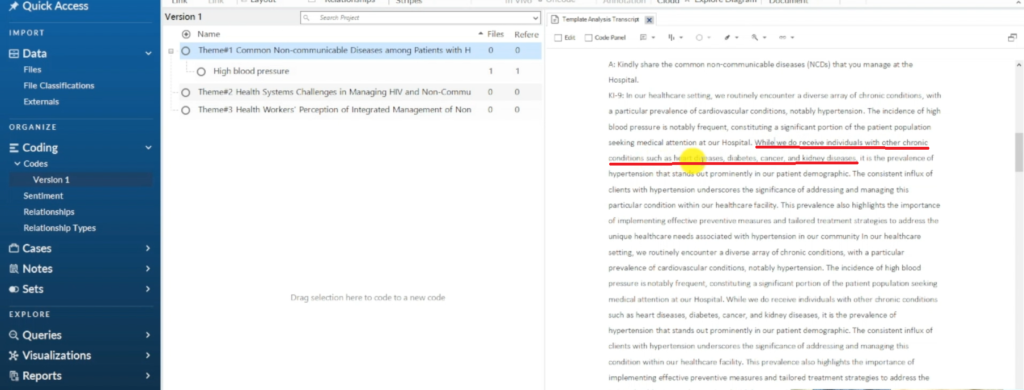
A Section of a Transcript in Nvivo 14
Let’s look at this. “Such as, heart diseases.”
Another way to code rather than dragging and dropping everything here, you can right click and go to code selection, and then click inside the theme, and then select child code.
And for this, I’m going to see, because this person is talking about heart diseases. So, another common non communicable condition among HIV patients is heart disease. I want to edit here, heart disease,
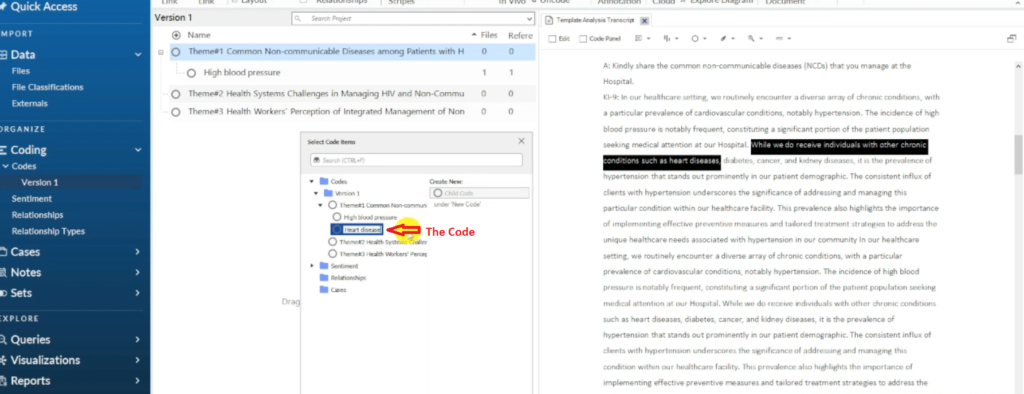
The Code Heart Disease is Created
Then we have diabetes, we code it as in vivo. In vivo means the code is developed directly from the words that are used in the transcript.
Then we have cancer. This one can also be an in vivo quote. Right click, select code in vivo.
You can see, we have started getting information to support our main theme. Common and communicable diseases among patients with HIV.
We have cancer, diabetes, heart disease, and high blood pressure. We got all those codes from our interview transcripts.
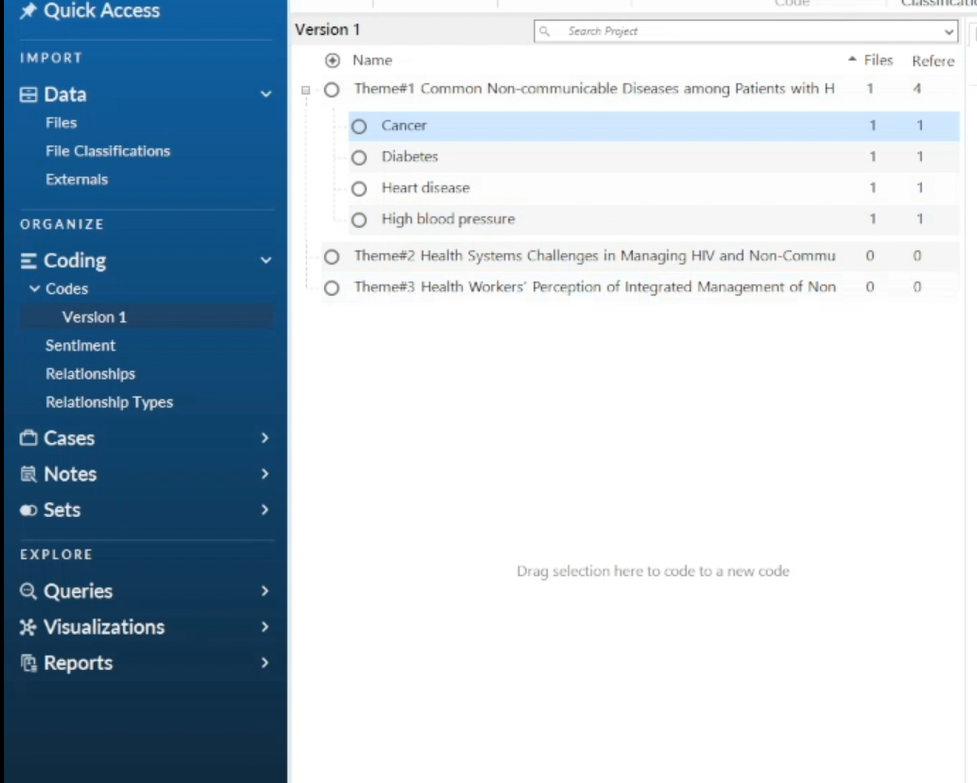
Codes
Another disease we can see is kidney diseases
So, kidney diseases. That’s another common and communicable disease among patients with HIV.
Then, “it’s the prevalence of hypertension that stands out prominently in our patient demographic. This consistent influx of clients with hypertension underscores the significance of addressing and managing this particular condition within our healthcare facility.”
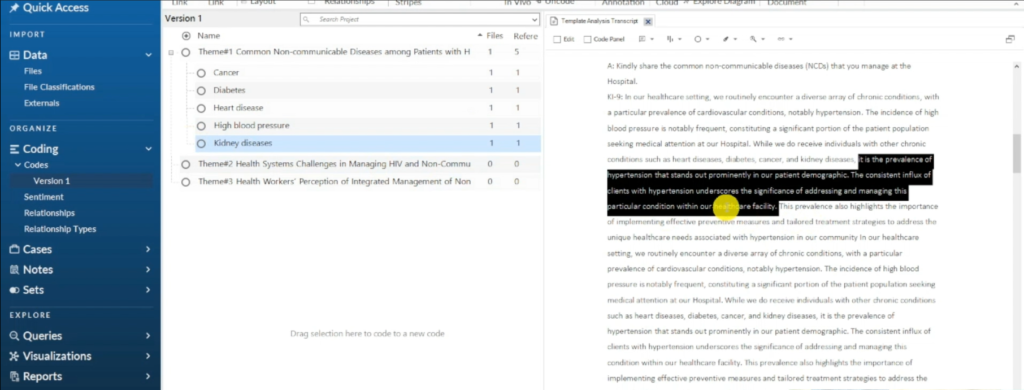
A Section of a Transcript in Nvivo 14
You see, hypertension is very prevalent.
Remember hypertension is the same as high blood pressure. I would highlight all that information. If I want to add information into already developed code, I highlight it, I drag and drop it inside the high blood pressure section.
And if we double click on the codes, you can see the quotes we are getting to support our codes. For example, here we have two quotes that support that high blood pressure is a very prevalent non communicable disease among patients with HIV.
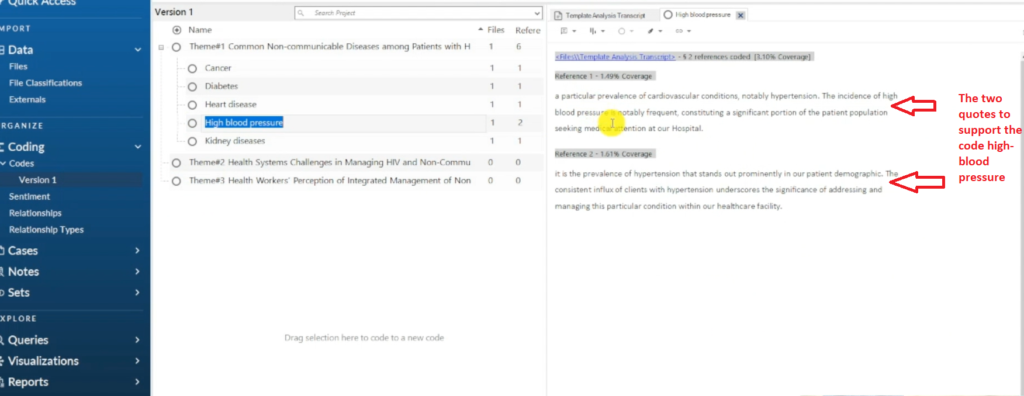
Participants Quotes in Nvivo 14
We can see another interviewee. This is a focus group, remember. They say high blood pressure is common among patients living with HIV.
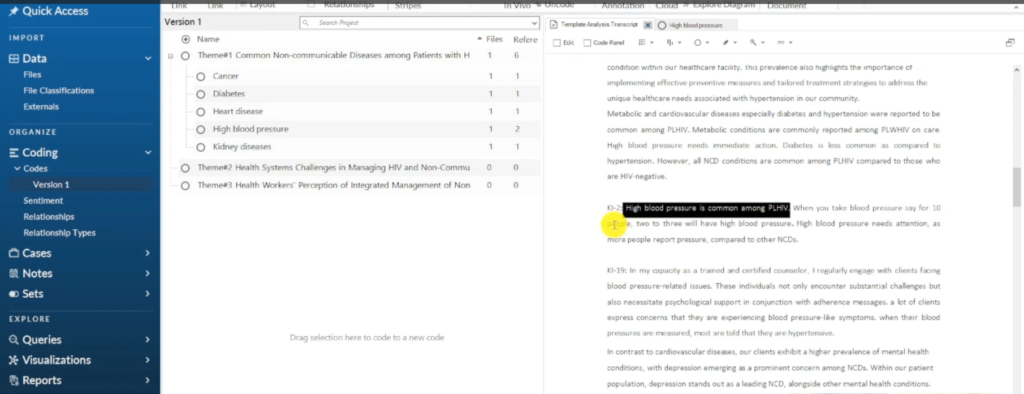
A Section of a Transcript in Nvivo 14
If you have a second person, if you are coding talking about the same codes you have already developed, how do you solve that?
I highlight the section high blood pressure is common among patients living with HIV. Then I drag this and drop this inside the code I had already developed for high blood pressure.
Let’s look at another participant talking about the common and communicable diseases among patients with HIV.
In my capacity as a trained and certified counsellor, I regularly engage with clients facing blood pressure related issues.
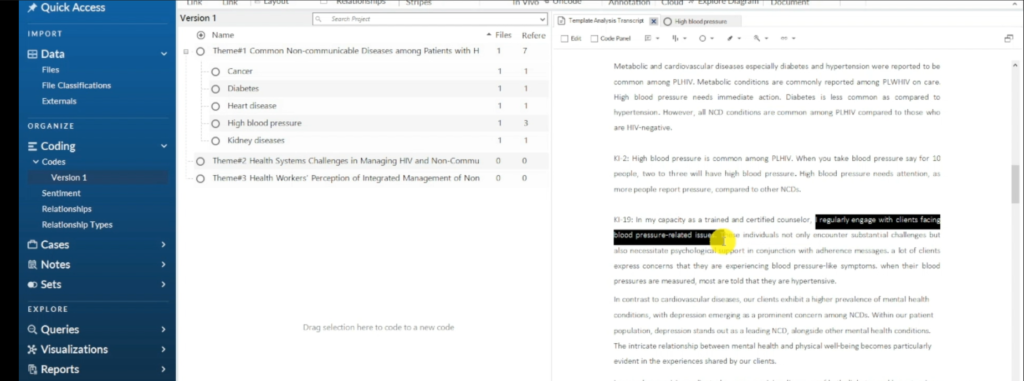
A Section of a Transcript in Nvivo 14
You see, this person also has encountered a lot of patients who have high blood pressure issues, so, high blood pressure related issues.
Drag, drop that, in the high blood pressure code.
Then, we can see, our clients exhibit a higher prevalence of mental health conditions, with depression emerging as a prominent concern among these patients.
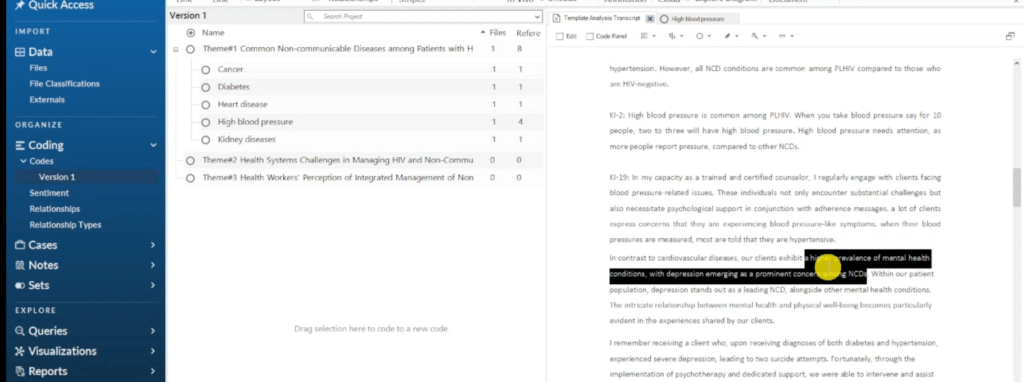
A Section of a Transcript in Nvivo 14
We can highlight this section, right click, another way of coding, go to code selection.
Remember, we click on the new theme, then we click child code, and call this depression, or mental health issues, or specifically depression, then click here, code selection to new code, and you see we have added the code of depression.

The Code Depression is Created
Basically, that’s how we fit information into already predetermined themes when doing template analysis, I can put some few codes also in the second theme for you to understand more.
Health system challenges in managing HIV and NCDs.
“Kindly share the challenges managing HIV and NCDs.”
We experience multifaceted challenges during the management of both HIV and NCDs. Several issues include the intricate task of handling adverse events, the overwhelming workload.
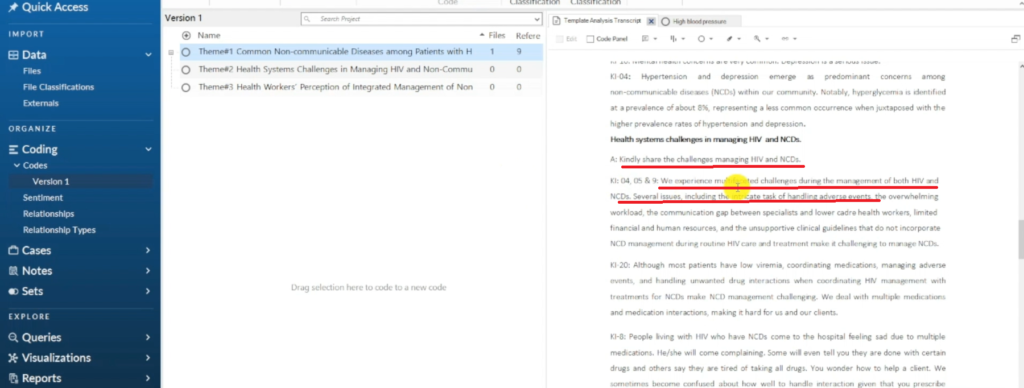
A Section of a Transcript in Nvivo 14
Let me highlight this area and say, challenges in managing HIV and NCDs is challenges handling adverse events.
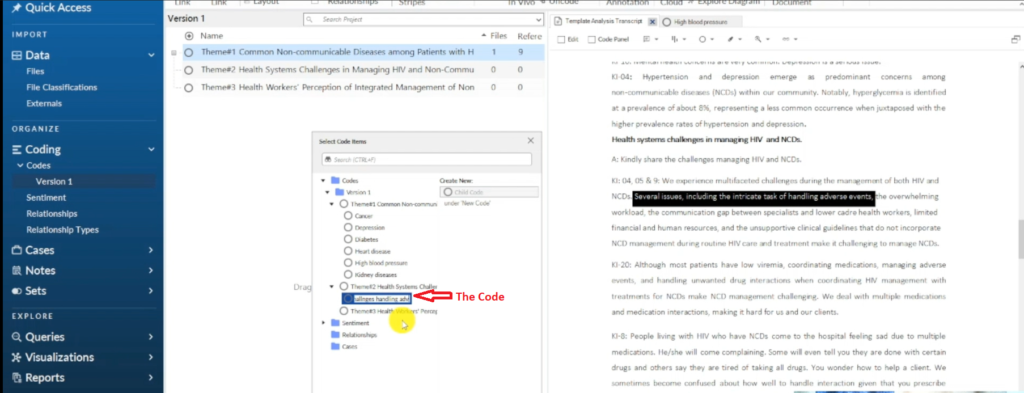
The Code Challenges in Handling Adverse Events is Created
Then overwhelming workload.
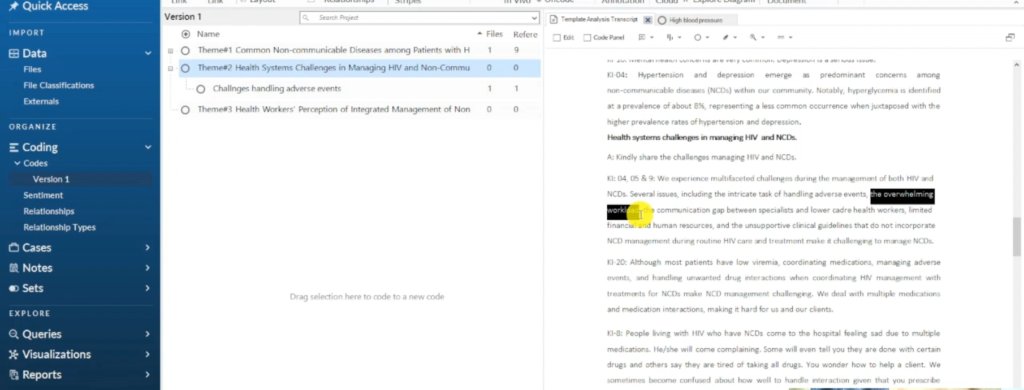
A Section of a Transcript in Nvivo 14
Let’s just go to select. Code selection. Select them too. I want a new child code called overwhelming workload.
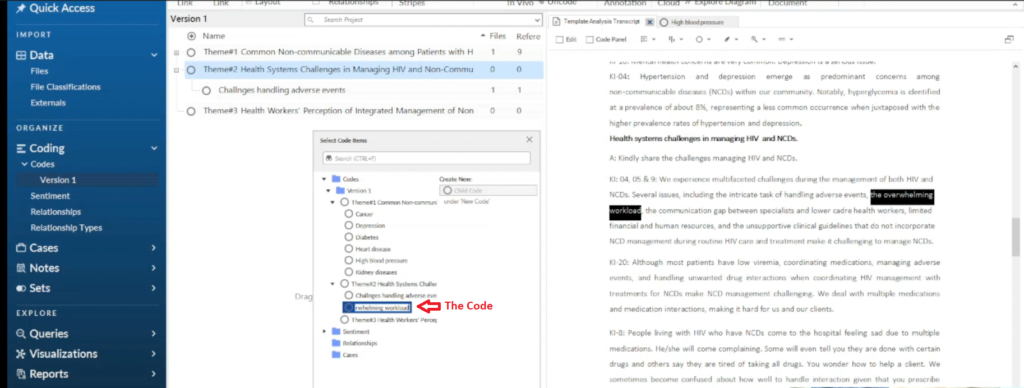
The Code Overwhelming Workload is Created
Then the communication gap between specialist and lower kiddle health workers.
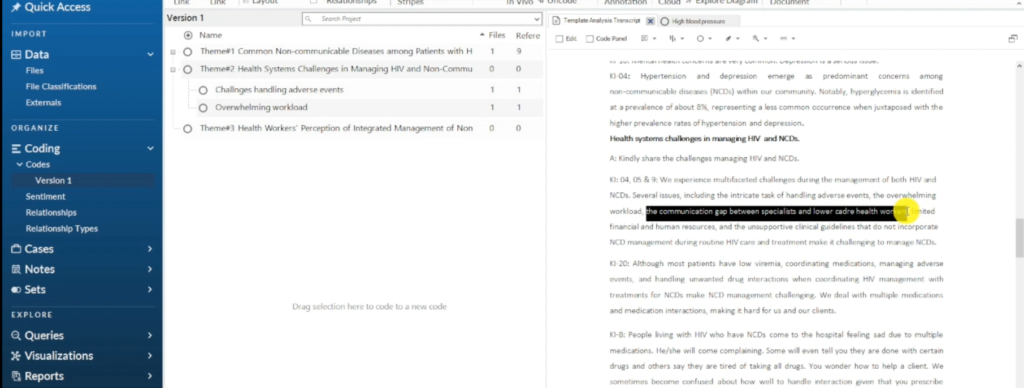
A Section of a Transcript in Nvivo 14
And let’s call this communication issues among health workers.
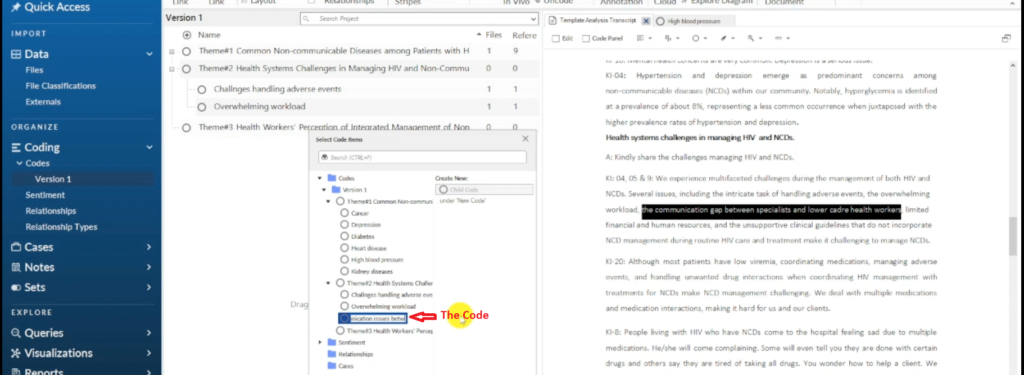
The Code Communication Issues among Health Workers is created
You can see the codes I’m developing here.
Now, if you want to edit any code, you can right click go to code properties and edit the code.
And also, if you want to add a description, I remember you have to add clear descriptions for all the themes when you are doing template analysis before you begin coding.
Now, another, another code here, Limited financial and human resources.
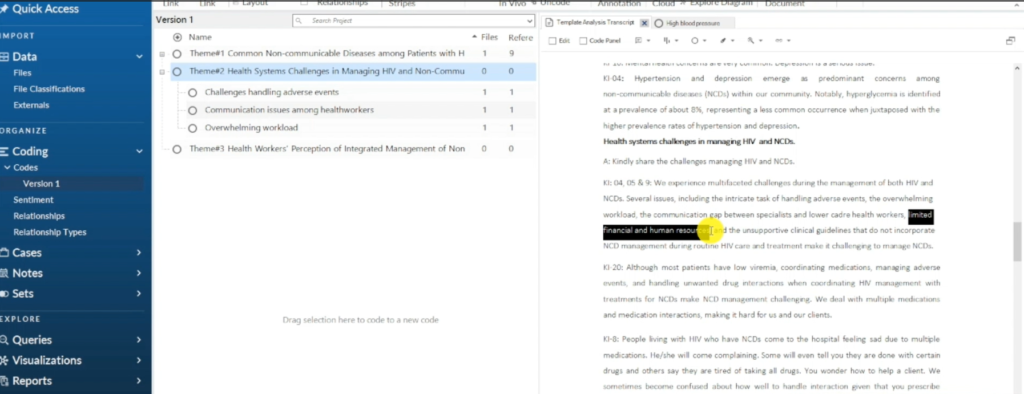
A Section of a Transcript in Nvivo 14
This one I can right click; I can code in vivo.
Health system challenges in managing HIV and non communicable diseases. Basically, these are the codes.

Codes in a Theme
We have developed codes for the second theme. We will go and develop codes for all themes so that we can fit participants’ data into the predetermined themes.
Reviewing Codes and Ensuring the Template is well Defined

Reviewing Codes and Ensuring the Template is well Defined
Now what we have to do in template analysis is go to the next step, which is reviewing these codes and ensuring that our template is well defined.
Our template will be made up of all the themes we have to ensure that the codes that we get relate to the theme that we predetermined.
We will have an opportunity to revise the themes to make them more accurate and then say that those themes will be our final template that we are going to use to fit all the codes,
I went into the whole focus group and got all the codes. got all the codes and fitted them into my main themes that I had developed, or that I had come up with initially.
After fitting all the codes into the themes, we again revise the codes, and now we have the final work.
Some areas, when I find a pattern of shared meaning between the codes, I can group them together. So, for example, for non communicable diseases, I found a pattern of shared meaning, including cardiovascular conditions for heart disease and hypertension.
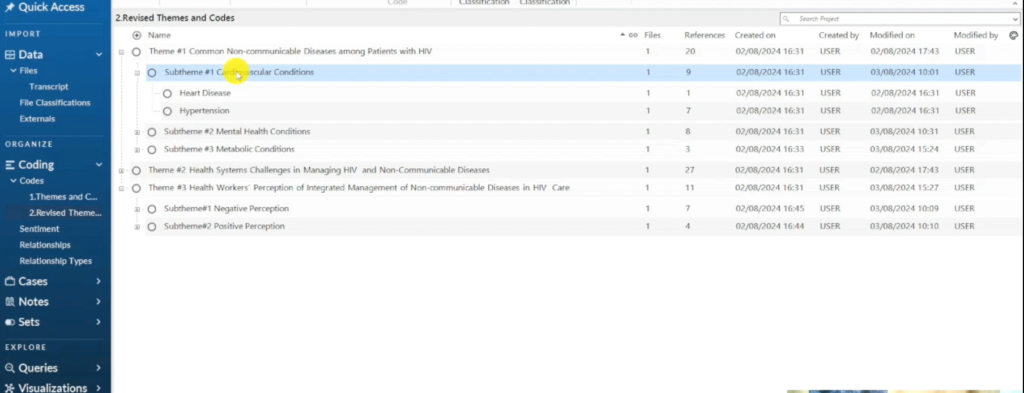
A Subtheme in a Theme
Mental health conditions, including depression.
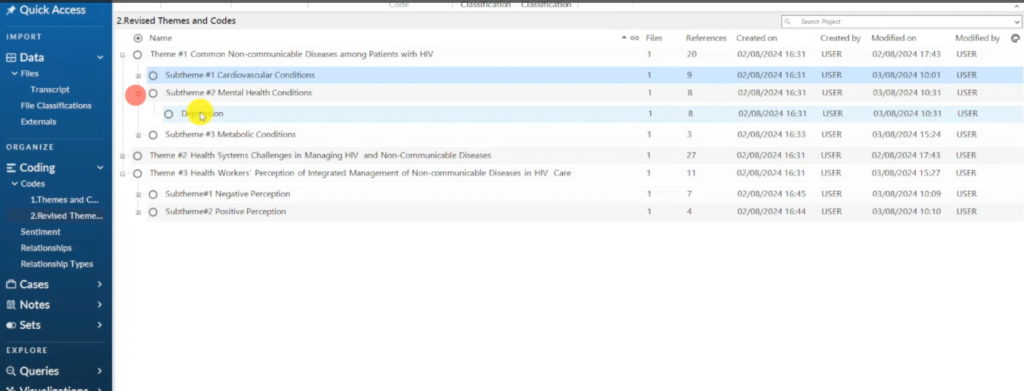
A Subtheme in a Theme
Metabolic conditions, such as diabetes, hyperglycemia, and kidney disease.
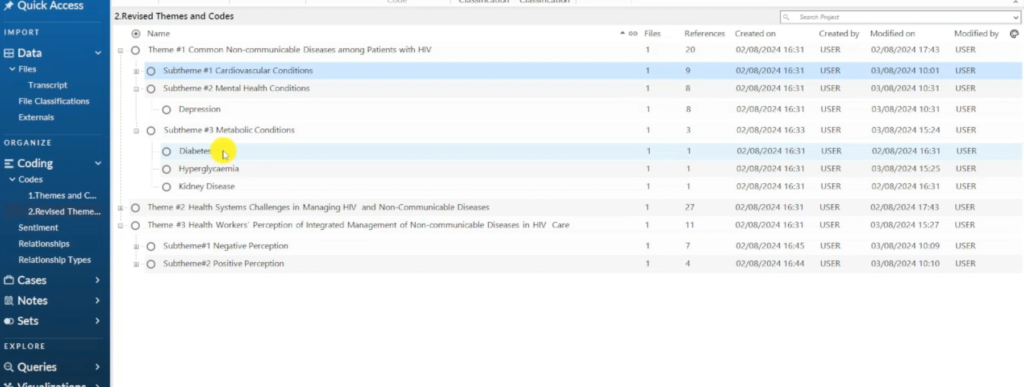
A Subtheme in a Theme
These three conditions became sub themes and then the codes under them.
Also, for the second theme, I got as many codes as possible to support my main theme.
And for the third theme, I had negative perception and positive perception cause the workers were giving either a negative or a positive perception of integrated management of non communicable disease in HIV care.
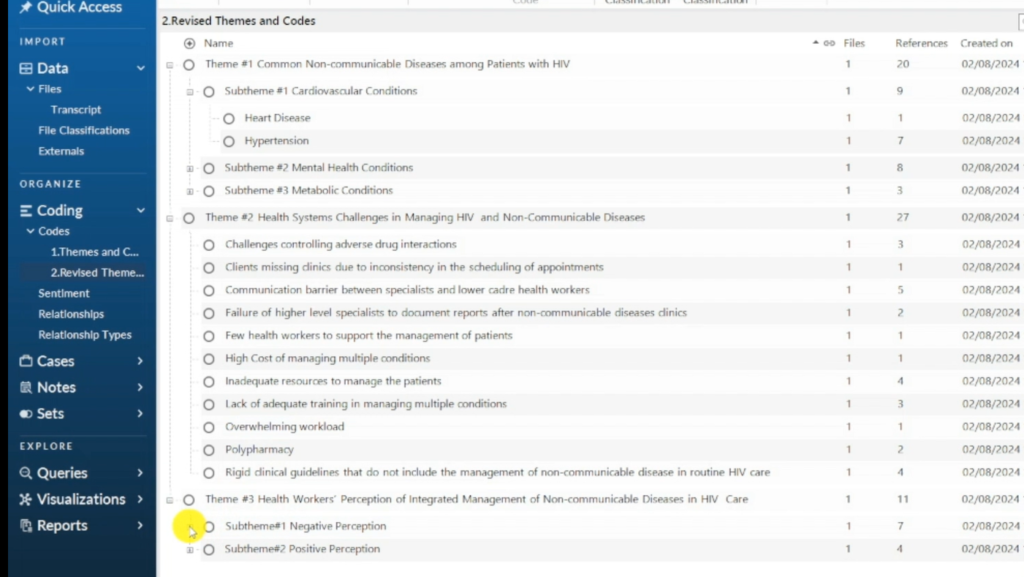
Theme 3 has Two Subthemes
Basically, template analysis is simply determining the themes and then finding codes to match to the themes and then revising the themes and then ensuring that you get codes from all your transcripts.
Writing the Findings Report

Writing the Findings Report
After revising the themes, getting sub themes, and getting the codes from all your transcripts, now you just move to writing your findings report. And that’s what I did with this report.
Basically, template analysis is getting things a priori or having predetermined things, which mainly come from your research questions and research objectives, and then going to your transcripts or interviews, finding data and coding that data and then fitting or matching the codes to the right themes.
And finally, you revise and you review the codes and you write the findings report such as this report.
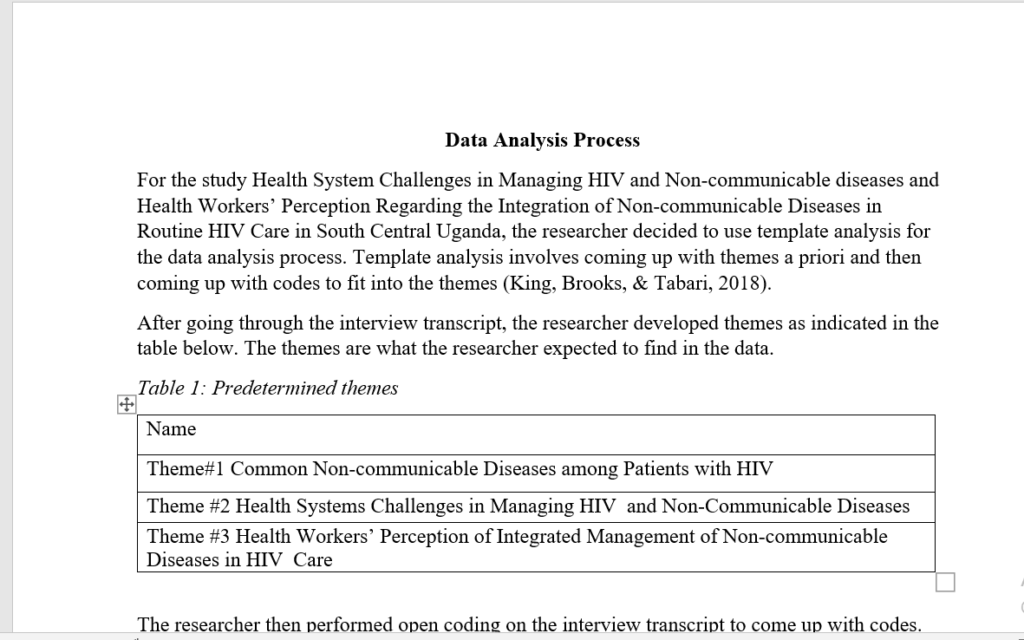
The Findings Report
The findings report contain tables.
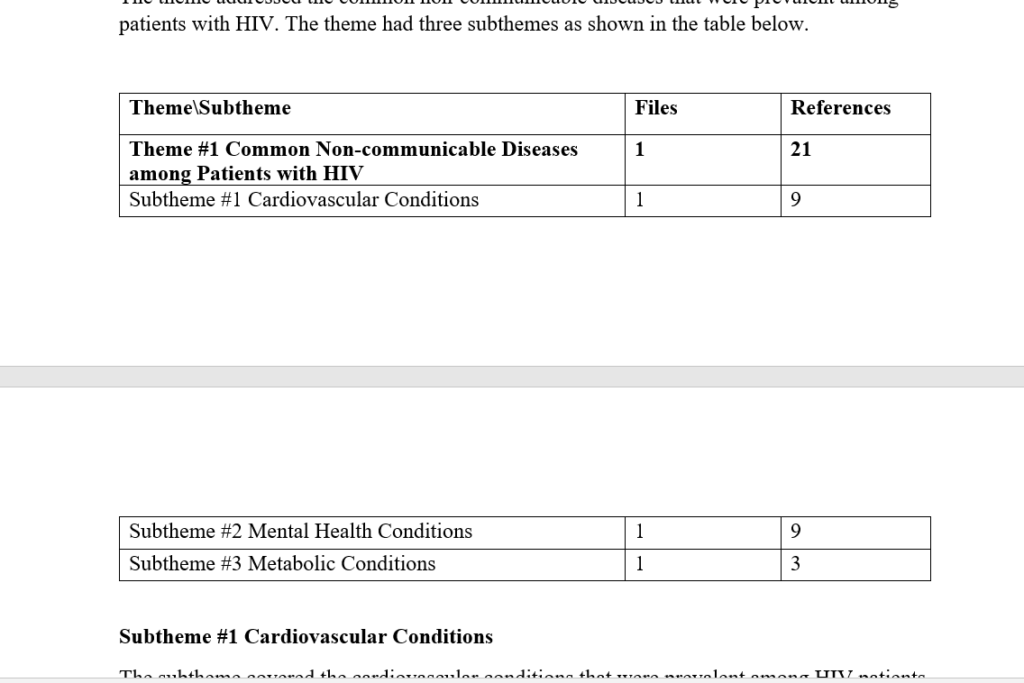
A Table in the Findings Report
It also contains other visuals known as mind maps.
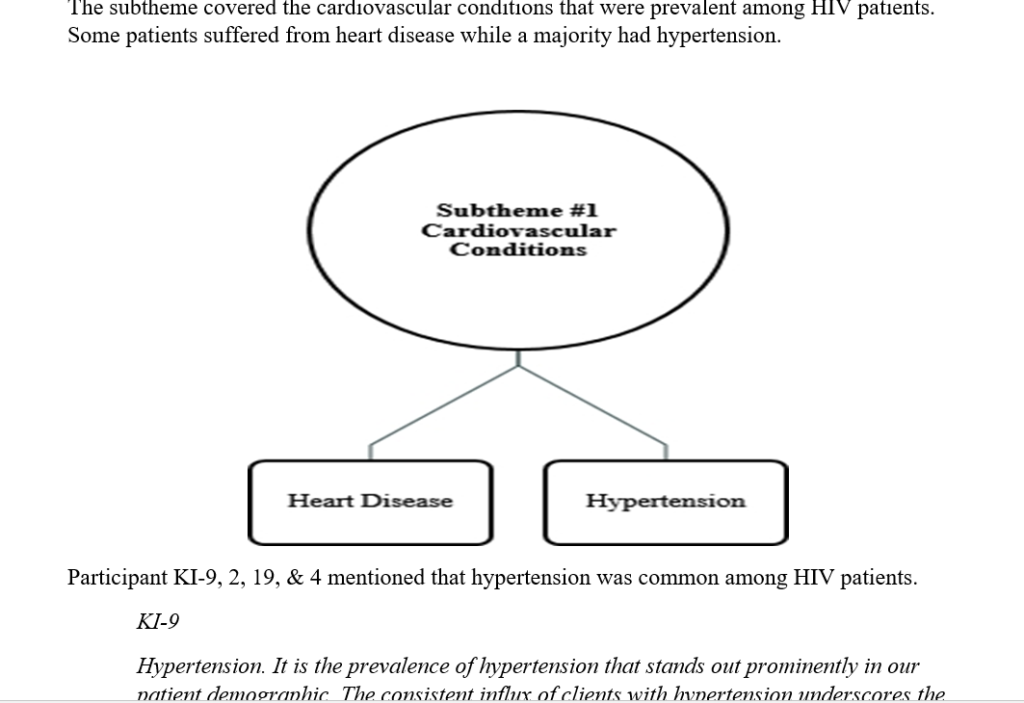
A Mind Map in a Findings Report
To access the findings report click here, findings report
Basically, this is how you conduct template analysis using NVivo.
